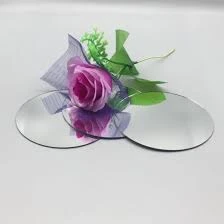

The Advantages of Low-E2 Glass in Modern Architecture
In the ever-evolving world of architecture and construction, energy efficiency has become a paramount concern, leading to the emergence of innovative building materials. One such advancement is Low-E2 glass, which has captured the attention of architects, builders, and homeowners alike due to its remarkable energy-saving properties and aesthetic appeal.
The Advantages of Low-E2 Glass in Modern Architecture
One of the most notable benefits of Low-E2 glass is its ability to block harmful ultraviolet (UV) rays. Natural light can brighten a space, but prolonged exposure to UV radiation can fade furnishings, artwork, and flooring. Low-E2 glass effectively filters out these harmful rays, preserving the aesthetic integrity of interior spaces and prolonging the life of valuable items.

Furthermore, Low-E2 glass is versatile in design. Available in a variety of tones and finishes, it can complement various architectural styles, from modern minimalist to traditional designs. This adaptability makes it a favored choice among architects who strive to create visually appealing structures without compromising energy efficiency.
The environmental impact of using Low-E2 glass cannot be overstated. As society becomes more conscious of climate change and resource consumption, building with energy-efficient materials is critical. Low-E2 glass contributes to greener buildings, which are increasingly being recognized through various certifications, such as LEED (Leadership in Energy and Environmental Design). Such certifications not only highlight a building's sustainability but can also enhance its market value.
In conclusion, Low-E2 glass represents a significant leap forward in building technology, merging performance with aesthetics. Its energy-efficient properties, UV protection, and design versatility make it an ideal choice for modern architecture. As more builders and homeowners embrace sustainable practices, Low-E2 glass will undoubtedly play a crucial role in shaping the future of eco-friendly construction. By investing in energy-efficient materials like Low-E2 glass, we take a step towards a more sustainable and beautiful architectural landscape.